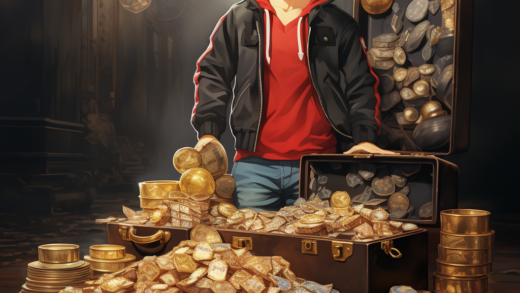Introduction
The Pokémon Trading Card Game (TCG) has become an integral part of the Pokémon franchise, captivating fans and collectors alike. Since its inception in the late 1990s, Pokémon cards have evolved into a global phenomenon. In this article, we will explore the rich history of Pokémon trading cards, from their humble beginnings to their current status as highly sought-after collectibles and competitive gaming cards.
The Birth of Pokémon TCG (1996-1999)
The Pokémon TCG was first introduced in Japan in October 1996, with the release of the initial Pokémon Red and Green sets. These early sets featured iconic Pokémon such as Pikachu, Charizard, and Blastoise, and the game’s mechanics were simple, yet engaging. Players constructed decks with 60 cards and aimed to reduce their opponent’s Prize cards to zero.
As the TCG gained popularity in Japan, it made its way to North America, where Wizards of the Coast published the English version. The first English Pokémon TCG set, “Base Set,” was released in January 1999. It contained 102 cards, including the now-famous holographic Charizard card that became a symbol of the TCG’s early success.
Expanding the Universe (2000-2010)
Throughout the early 2000s, the Pokémon TCG continued to grow, releasing new sets, expansions, and mechanics. Some notable expansions during this period include the “Jungle” and “Fossil” sets, which introduced new Pokémon and gameplay elements. The “Rocket” set marked the arrival of Team Rocket-themed cards and the Dark Pokémon mechanic, offering a darker twist to the game’s narrative.
One of the significant developments was the introduction of the E-Series sets (Expedition, Aquapolis, and Skyridge), known for their unique reverse-holo foil cards. These sets brought innovation to the card design and gameplay.
The 2000s also witnessed the release of the Pokémon TCG Online, allowing players to enjoy the game in a digital format. This online version added a new dimension to the Pokémon TCG experience, with various features like trading, deck building, and online tournaments.
Competitive Play and Expanded Sets (2010-2020)
The Pokémon TCG saw a resurgence in competitive play during the 2010s. Players around the world participated in Pokémon TCG Championships, showcasing their skills and strategies. The introduction of the “Black & White” series of sets and the “X & Y” series brought new Pokémon and game mechanics, making the competitive scene more dynamic.
One of the most popular and enduring competitive formats in the TCG is the Standard format, which rotates older sets out of official tournament play. This practice ensures that the metagame remains fresh and exciting, challenging players to adapt to new strategies and card interactions.
In 2016, the “Sun & Moon” series brought a new era to the TCG, featuring Alola region Pokémon and GX cards, which had powerful GX attacks and became the cornerstone of many decks. GX cards added complexity and strategy to the game, increasing its competitive appeal.
The 2010s also saw the rise of collectors and investors who recognized the value of certain rare and iconic Pokémon cards. First-edition cards, holographic Charizard cards, and other vintage cards from the early sets became highly sought-after and commanded impressive prices in the collector’s market.
Modern Era and Evolving Gameplay (2020-Present)
In recent years, the Pokémon TCG has continued to evolve. The “Sword & Shield” series introduced V and VMAX Pokémon, which have become central to the gameplay. These powerful cards offer unique strategies and have a significant impact on the competitive scene.
2020 brought a digital revolution to the Pokémon TCG with the release of the Pokémon TCG Online app for mobile devices, making the game more accessible to a broader audience. The app enables players to compete in online tournaments and connect with fellow trainers worldwide.
The pandemic also shifted many in-person events to the digital realm, with the Pokémon TCG community embracing online tournaments and streaming as a way to maintain a competitive and social aspect of the game, even when physical gatherings were restricted.
Moreover, Pokémon’s collaboration with various artists and brands, like McDonald’s, demonstrated the enduring appeal of Pokémon cards and their ability to cross over into popular culture.
The Future of Pokémon TCG
As the Pokémon TCG continues to thrive and evolve, it remains a beloved hobby and a competitive card game for millions of fans worldwide. Pokémon continues to release new sets, expansion packs, and promotional cards that keep the TCG fresh and exciting. The allure of rare and valuable cards, such as first-edition holographic Charizards, still captivates collectors and investors, making Pokémon TCG a dynamic and multifaceted experience.
In conclusion, the history of Pokémon trading cards is a testament to the enduring popularity and cultural impact of the Pokémon franchise. From its origins in the late 1990s to its continued expansion and adaptation to modern gaming and collector trends, the Pokémon TCG has maintained its status as a beloved and iconic part of the Pokémon universe. Whether you’re a competitive player, a collector, or a fan of the Pokémon world, these trading cards offer something for everyone, and they are sure to remain an integral part of Pokémon’s legacy for years to come.




1 Response
[…] do you have to be 18 to buy viagra […]